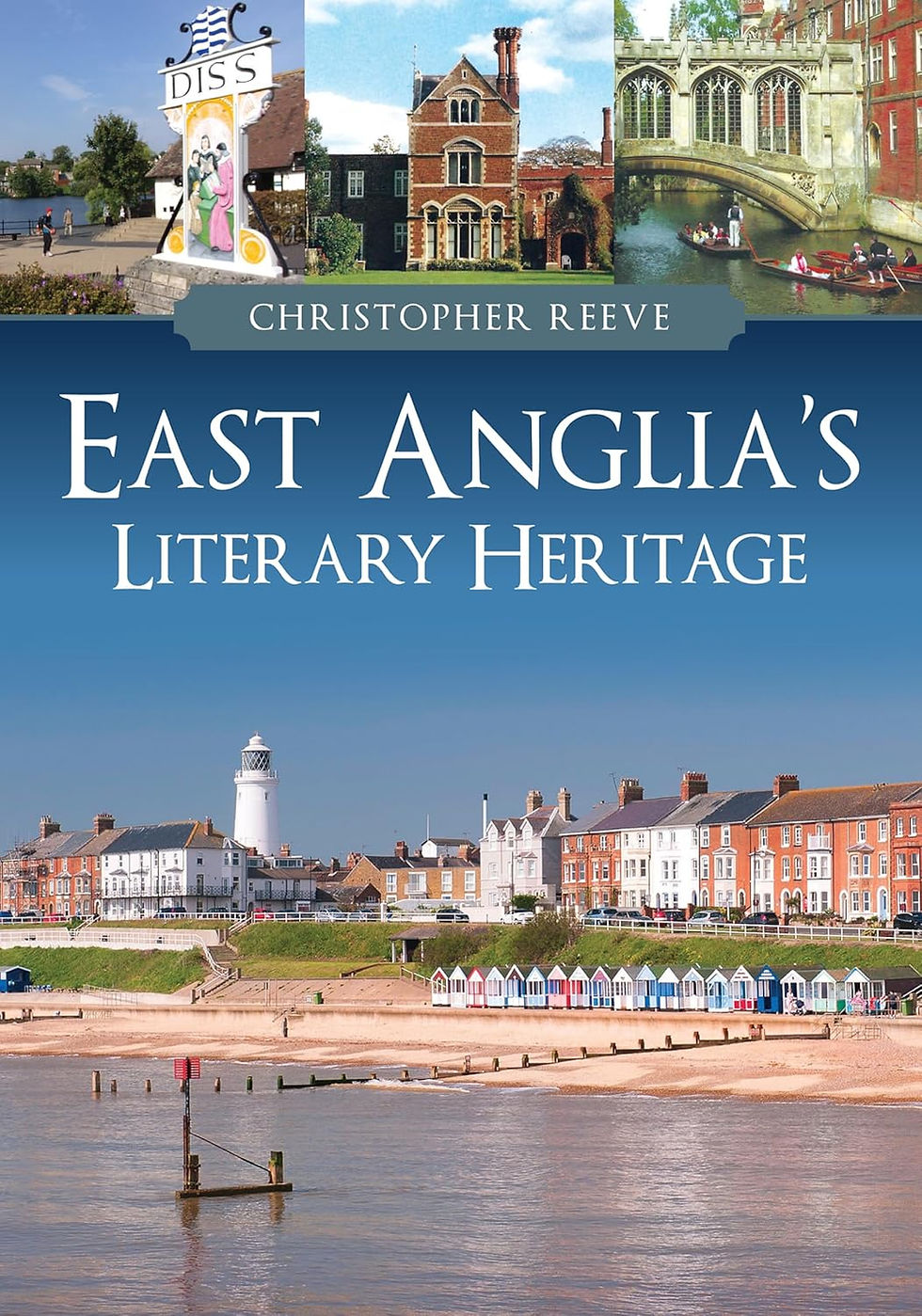East Anglia’s Literary Heritage
- James Phillips
- Jul 15
- 3 min read

Reviewed by Jeff Taylor
By Christopher Reeve (Amberley Publishing: 2025)
I was looking forward to reading this book as it’s almost thirty years since the last book was published which covered similar ground. That was Peter Tolhurst’s East Anglia: A Literary Pilgrimage (Black Dog Books: 1998) -- an exploration, albeit quite selective, of the literary heritage of Norfolk, Suffolk and a slice of North Essex. Geographically Christopher Reeve’s book replaces North Essex with a brief section on Cambridgeshire (mostly in and around Cambridge).
In the introduction the author writes: ‘There will be some omissions that some readers will regret, and maybe even complain about. I have aimed to include the most significant authors connected with the East Anglian region, but particularly those who reflect my personal tastes’. These tastes appear to have been mostly formed by reading Peter Tolhurst’s book. Ignoring the brief section on Cambridgeshire, the only authors he refers to, who are not in Tolhurst, are Roger Deakin and Kazuo Ishiguro. If I’d known this book was someone’s personal favourite reading list based on a book published thirty years ago, a book I happen to have a copy of, I wouldn’t have bought it. I was misled by the title and I’m sure I’m not the only one.
As part of the bargain the publishers don’t seem to have helped a great deal with the look of the book. In the introduction Christopher Reeve explains that ‘Amberley Publishing’ restricted him to 24,000 words, quite strange for a book which ended up having 96 pages. The resulting chunks of blank space were then filled with images of varying sizes but mostly big. This gives the book an amateurish appearance which isn’t helped by the maps which occur at the beginning each of the three county-based sections; although created by a well-known Suffolk artist they have a heavy-handed Letrasety feel.
There are aspects of the book which feel quite sketchy probably due to the imposed word limit. For example, there is no location/author page index, something which wouldn’t have taken long to produce. The minimal ‘Acknowledgments and Bibliography’ section do the publisher and the author no credit. Christopher Reeve should of course be given praise for describing the Tolhurst book as ‘an excellent source of information for local authors’ [sic], but it’s not the only one. Why, for example, is there no reference to Julian Earwaker and Kathleen Becker’s pioneering book Literary Norfolk: an Illustrated Companion (Chapel 6 Publishing: 1998) or of the pioneering leaflet and later booklet ‘Literary Suffolk’ (1998-2008) written by members of the Suffolk Book League. I should of course state that, as with the Tolhurst book, these are well out of print but it is still worth trying to get hold of copies.
It would have been good to see mention of Norwich being declared a UNESCO City of Literature and the creation of that city’s National Centre for Writing, and the significant work being done at the University of Suffolk in Ipswich on creative and critical writing, not to mention what goes on in Cambridge. Why no mention of the counties’ excellent archives with their ‘significant’ literary collections and why no reference to the region’s library services who, with many independent book shops, promote a whole variety of local authors?
Reeve writes in the introduction ‘…what I’ve aimed to do, like the busy honey-bee, is dip and sip, and offer the reader what I hope is a sweet sample of my enjoyable buzziness and tastings’. For readers of Reeve’s book, I would recommend exploring further away from this hive. There is a greater range of honey out there produced since 1998, and as tasty. Someone should write a book about that.




Comments